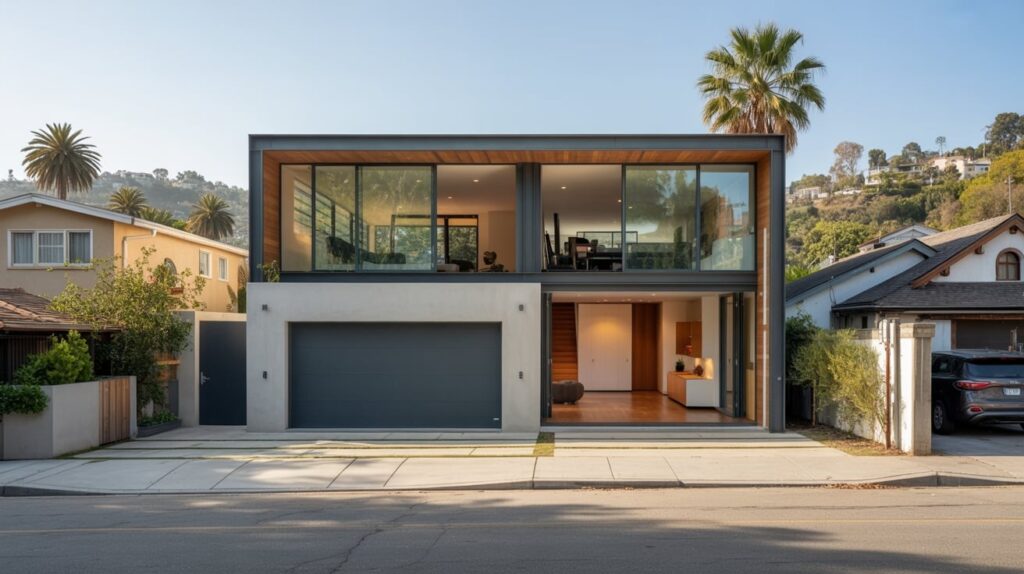In Los Angeles, where every square foot carries weight and opportunity, homeowners are rethinking what “extra space” means. The city’s ongoing push for more flexible housing solutions has put Accessory Dwelling Units—ADUs—at the center of this transformation. What was once a neglected garage or underused backyard structure is now becoming a private studio, rental apartment, or extended family suite.
Behind many of these conversions are design-led builders and ADU specialist teams who understand both city regulations and modern livability. The appeal is clear: maximize property value, improve functionality, and respond to LA’s growing demand for adaptable housing.
From Parking to Purpose
For decades, detached garages sat idle across Los Angeles neighborhoods—too small for modern vehicles and too valuable to waste. As zoning laws evolved and the state encouraged more housing density, homeowners began seeing those spaces differently.
A garage conversion into an ADU typically adds between 300 and 600 square feet of usable area. It can serve as a rental for supplemental income, a guest suite for visiting family, or a home office that separates work from home life. Some homeowners even design multi-use units with foldaway furniture or adaptable layouts that shift function throughout the day.
These projects are no longer side hustles; they are architectural investments. The return on value, both financially and in lifestyle flexibility, is substantial.
Why Garage Conversions Make Sense in LA
Los Angeles real estate is expensive, and expanding outward or upward can trigger major costs and restrictions. Garage conversions, on the other hand, make efficient use of existing structures. The foundation and roof are often reusable, reducing both material waste and project cost.
With the right design, these compact spaces can feel surprisingly spacious. The trick lies in high ceilings, large windows, and clever storage built into every inch. Professional teams know how to use light, texture, and proportion to make small dwellings feel generous.
Beyond economics, these conversions align with LA’s growing interest in sustainability. Repurposing existing structures instead of demolishing them saves resources and energy. It’s renovated with both purpose and restraint.
Navigating the Regulations
LA’s ADU guidelines have relaxed in recent years, but they still require careful navigation. Homeowners need to ensure compliance with setbacks, utility connections, parking adjustments, and fire separation standards.
That’s why working with an experiencedcontractor is crucial. These professionals understand not only construction codes but also how to handle site evaluations, design submittals, and inspections efficiently. A well-organized submission can shave weeks off approval time and prevent costly redlines.
The Design Priorities Shaping Modern ADUs
Today’s ADUs aren’t makeshift add-ons—they’re miniature homes that need to function as well as primary residences. Builders across LA are focusing on a few key principles that define successful conversions:
Light and volume: Skylights, sliding doors, and glass walls bring openness to small footprints.
Smart storage: Built-in cabinetry, convertible furniture, and lofted sleeping zones make limited areas work harder.
Energy efficiency: Proper insulation, heat pumps, and low-flow fixtures keep utilities low and comfort high.
Material selection: Simple palettes, durable finishes, and natural textures ensure the space feels cohesive and modern.
Outdoor connection: Patios and shared courtyards expand perceived square footage and encourage easy indoor-outdoor flow.
The Economic Impact
For homeowners, ADUs are one of the few home improvements that can genuinely pay for themselves. Rental income from an attached or detached unit can offset mortgage payments or create a steady passive stream. Even if used for family, the added livable square footage significantly boosts resale value.
Appraisers in LA increasingly treat ADUs as valuable components of the main property rather than as detached bonuses. This shift has made conversions one of the smartest long-term investments a homeowner can make—especially in high-demand neighborhoods where land is scarce.
Sustainability and the Future of LA Housing
ADUs play an important role in addressing LA’s broader housing challenges. They offer gentle density—adding living units without altering neighborhood character. They also fit naturally into the city’s sustainability goals, reducing commuting distances, promoting shared infrastructure, and using less material than full home additions.
Many builders now design ADUs with sustainable construction practices, from reclaimed wood finishes to solar-ready roofs. The movement aligns with the city’s identity as both design-savvy and environmentally progressive.
Why Design Quality Matters
The best garage conversions don’t feel like conversions at all. They feel like intentional architecture. Achieving that level of polish takes planning, creative layout, and construction precision. Good ADU builders balance design flair with the realities of plumbing runs, structural reinforcement, and acoustic privacy.
LA homeowners have learned that the cheapest bid often costs the most in the long run. Teams that can deliver a balance of design, engineering, and craftsmanship are the ones transforming this sector into something more permanent and respected.
A Smarter Kind of Expansion
The rise of ADUs reflects a cultural shift as much as a housing one. People want to live more flexibly—whether that means supporting multigenerational families, creating private studios, or earning rental income without leaving their neighborhood.
For many, converting a garage has become the most accessible path to that lifestyle. With thoughtful planning and skilled execution, it’s possible to transform underused square footage into something meaningful, sustainable, and profitable.
Across Los Angeles, the humble garage is getting a second act—and it’s changing the way homeowners think about what their property can do.

